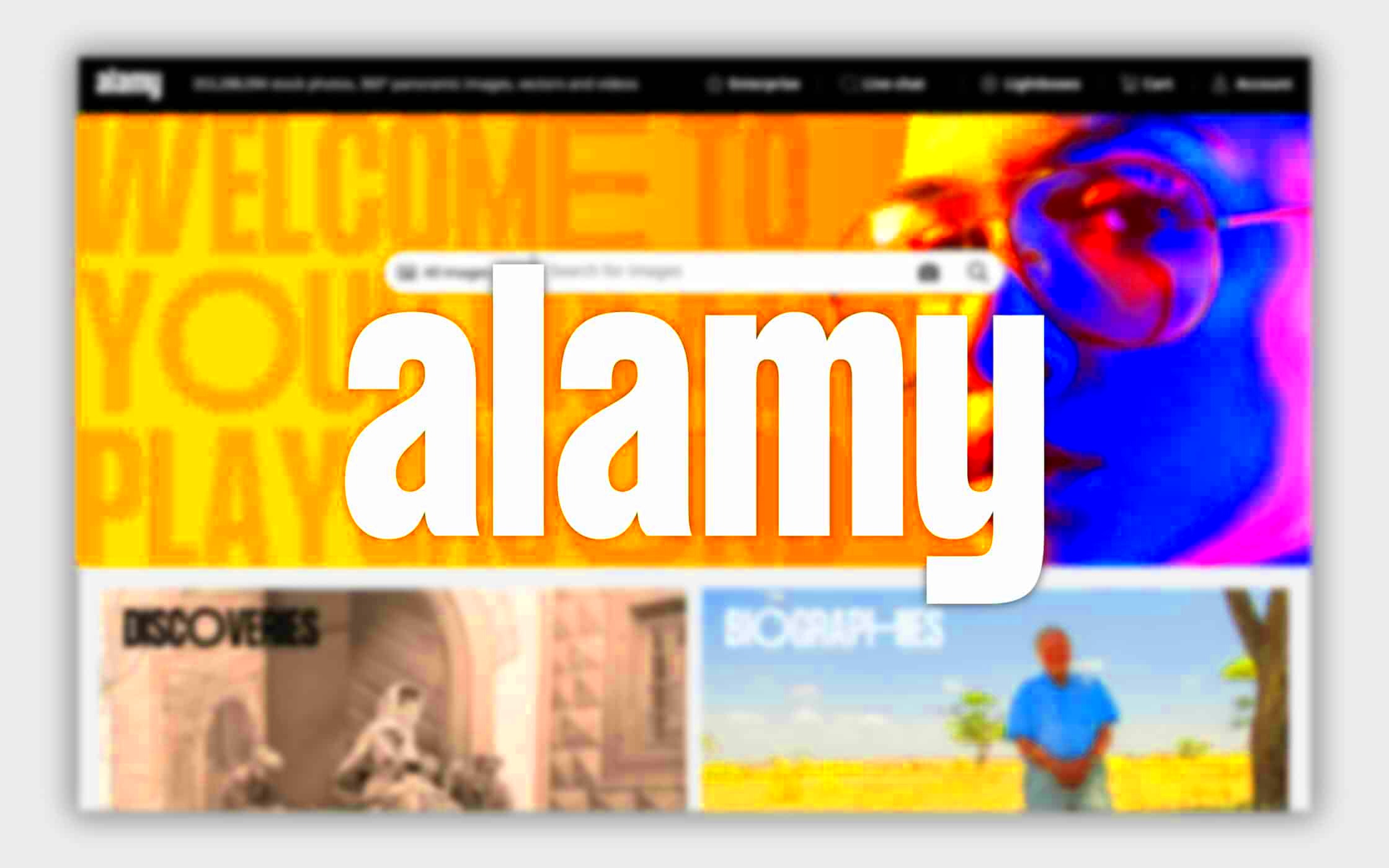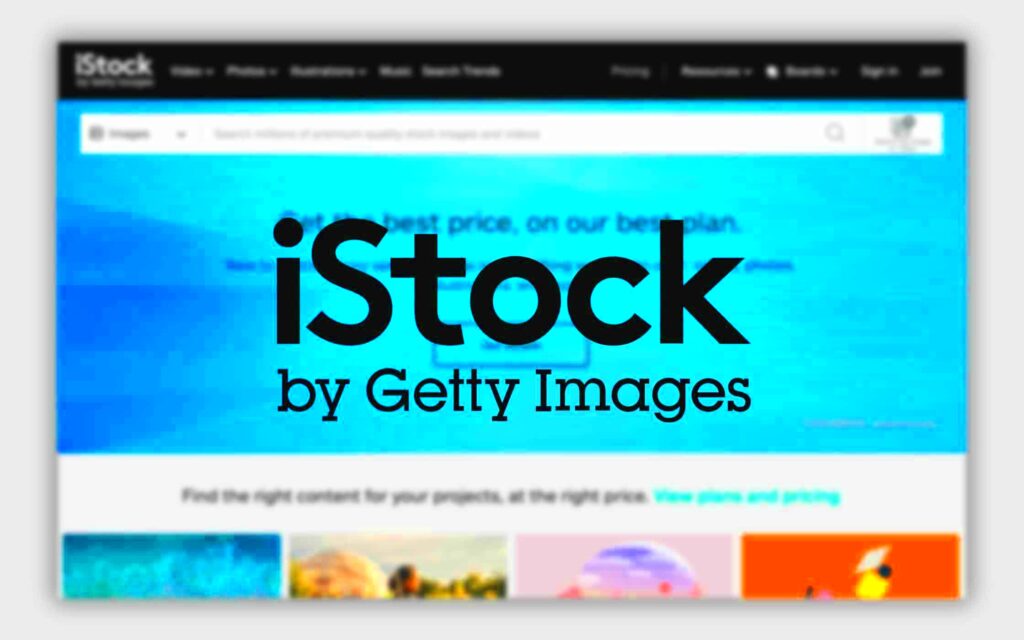When it comes to finding images Getty Images has always been a go to option. However with the changing digital landscape there are now more choices available for discovering beautiful visuals. In this article we will take a look at some alternatives to Getty Images that could be just right for you. Whether you're a writer, a marketer or a small business owner having a range of options can assist you in finding exactly what you need without straining your budget.
Why Consider Alternatives to Getty Images?

While Getty Images is a major player in the stock photo world it may not be the ideal choice for everyone. Here are some reasons to explore other options.
- Cost Efficiency: Getty Images can be pricey, especially for small businesses or individual projects. Alternatives often provide more budget-friendly options.
- Unique Collections: Some platforms offer more niche or unique collections that might better align with your brand’s voice or project requirements.
- Ease of Use: Alternatives may offer simpler interfaces or more flexible licensing options, making it easier to find and use images without a lot of hassle.
Based on what I’ve seen when I looked for other options, I not only saved some cash but also stumbled upon unique finds that weren’t available on Getty Images. It’s really about using the tool for the task at hand!
Also Read This: Is LSU Game Available on YouTube TV Streaming Details
Popular Getty Images Alternatives for Stock Photos

Several alternatives to Getty Images stand out for their unique advantages. Here’s a list of some well known options:
- Shutterstock: Known for its vast collection of high-quality images, Shutterstock offers a user-friendly interface and various subscription plans to suit different needs.
- Adobe Stock: If you’re already using Adobe products, Adobe Stock integrates seamlessly with Creative Cloud apps, making it a convenient choice for designers and marketers.
- iStock: A subsidiary of Getty Images, iStock provides a more affordable option while still offering a large selection of high-quality images.
- Depositphotos: With a diverse range of stock photos and flexible pricing plans, Depositphotos is ideal for those who need a variety of images on a budget.
- Unsplash: For those who prefer free options, Unsplash offers a vast collection of high-resolution images that are completely free to use.
During my exploration of different stock photo websites I found that although Getty Images had its own merits these alternative platforms offered a refreshing twist and often aligned better with my requirements. Whether you seek budget friendly options distinctive visuals or user friendliness checking out these choices could uncover exactly what you need.
Also Read This: Mastering YouTube Video Editing on Mac for Professional Outcomes
How to Choose the Right Alternative for Your Needs
Choosing the ideal stock photo site can be quite a challenge with a plethora of choices available. To help you narrow down your options here are some important factors to keep in mind to ensure you select the platform that best suits your requirements. Here's a handy guide to simplify your decision making process:
- Identify Your Needs: Start by understanding what kind of images you need. Are you looking for high-resolution photos for a website, or do you need diverse visuals for social media posts? Defining your requirements will narrow down your options.
- Check Image Quality: Look at sample images to gauge quality. Platforms like Shutterstock and Adobe Stock are known for their high standards, while free options like Unsplash can also offer impressive visuals.
- Consider Usability: The user interface should be intuitive and easy to navigate. A cluttered or confusing site can waste valuable time. Try out a few platforms and see which one feels most comfortable to use.
- Assess Licensing Terms: Licensing terms can vary significantly. Some platforms offer more flexible options, while others might have strict usage rights. Make sure the licensing terms align with your intended use of the images.
- Look at Pricing: Pricing models vary from subscription-based to pay-per-image. Compare these models to find what fits your budget best. Remember, a higher price doesn’t always mean better quality.
Based on what I’ve been through, I’ve learned that looking into these things before deciding can really help avoid frustration and make the image sourcing process go more smoothly. It’s all about striking the balance between your requirements and what’s out there.
Also Read This: How to Cook Steak at Home with an Easy Video Recipe
Comparing Pricing and Licensing Options
When choosing a stock photo platform pricing and licensing play a role. Heres a breakdown to assist you in navigating these factors efficiently.
| Platform | Pricing Model | Licensing Type | Flexibility |
|---|---|---|---|
| Shutterstock | Subscription or Pay-Per-Image | Royalty-Free | Flexible, with extended license options available |
| Adobe Stock | Subscription or Credit Pack | Royalty-Free | Integrated with Adobe Creative Cloud |
| iStock | Subscription or Credit Packs | Royalty-Free | Varied license options based on credits |
| Depositphotos | Subscription or Pay-Per-Image | Royalty-Free | Flexible pricing and licensing options |
| Unsplash | Free | Royalty-Free | Completely free to use with few restrictions |
Based on what I've seen being clear about the pricing and licensing terms from the start can help prevent surprises in terms of costs and legal problems. For example although sites like Unsplash provide images they may not always deliver the level of quality or exclusivity you require. Conversely paid platforms typically offer more extensive licensing choices that could justify the expense.
Also Read This: How to Create a Dailymotion Playlist to Organize Your Favorite Videos
Features and Benefits of Top Alternatives
Every stock photo site comes with its own set of advantages and perks. Lets dive deeper into what sets apart some of the leading options.
- Shutterstock: Known for its extensive library and high-quality images, Shutterstock also offers robust search filters and an easy-to-use interface. The subscription plans can be cost-effective for regular users.
- Adobe Stock: Integration with Adobe Creative Cloud is a significant advantage for those who use Adobe products. This seamless integration allows for easy access and efficient workflow.
- iStock: iStock offers a broad range of images and flexible licensing options. It’s ideal for those who want access to a large library with varying licensing needs.
- Depositphotos: With a wide range of images and flexible pricing options, Depositphotos is great for users who need quality visuals without a hefty price tag.
- Unsplash: Unsplash provides high-resolution images for free, which is a huge benefit for budget-conscious users. The quality is often comparable to paid platforms, though the selection might be more limited.
As I explore these platforms, I’ve come to realize that while they all have their merits the ideal option varies based on your individual requirements and financial considerations. For example if you’re on a shoestring budget Unsplash could be a hidden treasure. However if you’re seeking a collection with advanced search capabilities Shutterstock or Adobe Stock might be more suitable choices.
Also Read This: Visual Treat: How to Download Shutterstock Videos Without Watermark
Tips for Using Stock Photos Effectively
Leveraging stock images in a way can significantly impact your content. Throughout the years I’ve picked up some tips that can assist you in maximizing the potential of stock photos to ensure they enhance your project instead of diminishing it.
- Choose Relevant Images: Ensure that the stock photos you select align with your content’s message and tone. For instance, a tech blog might benefit from sleek, modern images, while a travel site might use vibrant, adventurous photos.
- Avoid Overused Stock Images: Sometimes, popular stock images can become cliché. Try to find unique or less common images to make your content stand out. Personal experience has shown that unique visuals often resonate better with audiences.
- Customize Your Images: Adding a personal touch can make stock photos feel more authentic. Consider overlaying text, adjusting colors, or combining multiple images to better fit your brand’s style.
- Be Mindful of Licensing: Always check the licensing terms to ensure you’re using images in accordance with the rights provided. This prevents potential legal issues and ensures you’re respecting the creator’s work.
- Use Images to Complement Your Content: The right image can reinforce your message, but it shouldn’t overshadow it. Ensure that images complement the text and don’t distract from the key points you’re trying to convey.
Based on what I've seen carefully picking and personalizing images has really boosted the look and impact of my content. It's crucial to select visuals that genuinely complement your message.
Also Read This: Maximizing Income with Shutterstock
How to Transition Smoothly to New Platforms
Moving to a different stock photo platform might feel overwhelming at first, but by following some careful steps you can make the transition smooth and even pleasant. Here are some tips for a seamless switch:
- Assess Your Current Needs: Before making the switch, evaluate what you like and dislike about your current platform. This will help you identify what you need from a new platform and ensure a smoother transition.
- Familiarize Yourself with the New Platform: Take some time to explore the new platform’s interface and features. Many platforms offer tutorials or guides that can help you get up to speed quickly.
- Transfer Existing Projects: If you have ongoing projects, start by downloading any necessary images from your old platform. Make sure you organize these files so you can easily locate and use them on the new platform.
- Test New Features: Experiment with the new platform’s features to understand how they work. This can include searching for images, using filters, and understanding the licensing terms. Getting comfortable with these features will make your work more efficient.
- Update Your Workflow: Adjust your workflow to integrate the new platform. This might involve updating your image sourcing process, revising your project management practices, or incorporating new tools.
When I switched from one platform to another, really investing time to grasp and get used to the new system had a significant impact. Its all about welcoming the shift and utilizing the resources to improve your content creation journey.
Also Read This: Downloading and Customizing Adobe Stock Templates
Frequently Asked Questions
Switching to a different stock photo platform or finding ways to use stock photos can bring up a lot of questions. Here are some frequently asked ones along with my personal insights based on my experiences.
- How do I know if a stock photo is right for my project? Consider the image’s relevance to your content, its quality, and how well it aligns with your brand’s voice. If it enhances your message and fits the aesthetic you’re going for, it’s likely a good choice.
- Can I use free stock photos for commercial projects? Many free stock photo platforms offer images that can be used for commercial purposes, but it’s essential to check the specific licensing terms for each image to ensure compliance.
- How do I avoid legal issues with stock photos? Always verify the licensing terms of each image you use. Make sure you’re aware of any restrictions or requirements, such as attribution or limitations on commercial use.
- What if I’m not satisfied with the images on the new platform? Most platforms offer customer support or trial periods. Don’t hesitate to reach out for assistance or explore different subscription plans that might offer more suitable options.
- How can I ensure consistency across my projects? Develop a style guide or visual standards for your content. This will help you maintain a consistent look and feel, even when using images from different platforms.
While these questions serve as a good starting point its important to remember that every project and platform has its own characteristics. Taking the time to consider your specific needs and past experiences can assist you in making choices that maximize the value you derive from your stock photo assets.
Conclusion
Selecting the stock photo platform and utilizing images effectively can significantly enhance your content while saving you both time and money. Based on my experience exploring different options beyond Getty Images not only expanded my perspective but also helped me discover the ideal fit for various projects. Its crucial to pinpoint your specific requirements grasp the pricing and licensing details and choose images that genuinely enhance your content. While switching to a new platform may initially appear daunting with some effort it can unlock new opportunities and streamline your content creation process. Ultimately well chosen images can elevate your projects so invest time in making selections and maximizing the resources at your disposal.
